#
11
October
2022
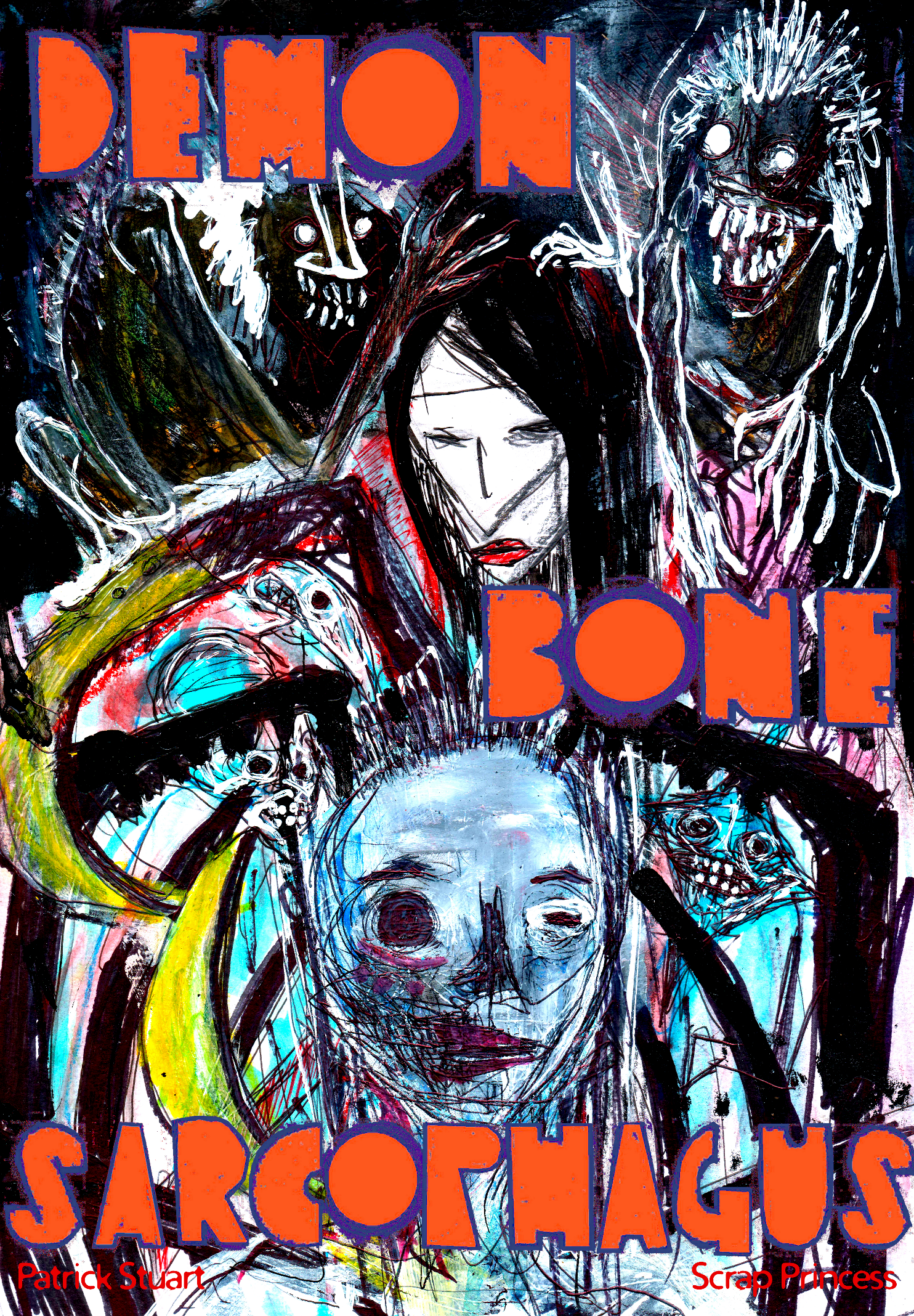
The first part of the infamous follow up to Deep Carbon Observatory is finally out, Demon Bone Sarcophagus. Time to buy while the Tories are demolishing the value of the British Pound! I’ve been reading the PDF on and off: there is so much going on it’s kind of bananas.
by Ramanan Sivaranjan on September 08, 2021
Tagged:
dco
patrickstuart
scrapprincess
osr
art
Patrick and Scrap are currently running a Kickstarter for the follow-up adventure to Deep Carbon Observatory, Demon-Bone Sarcophagus, so now seems as good a time as any to talk about their work. I like seeing them succeed. When I first reviewed Deep Carbon Observatory I had the following to say about Scrap’s work:
Scrap Princess’ illustrations contribute to the overall tone of the book. I find her work is so frenzied and terrifying. Maybe that’s not the right word, but there is something about how she draws that I find really visceral. I don’t know anyone else that draws like her.
All these years later, I still don’t know anyone who draws like her. How does she even draw?
My pinned tweet on Twitter is this picture by Scrap Princess, from the Kickstarter for Deep Carbon Observatory Remastered. I like it because it manages to be both funny and creepy simultaneously.
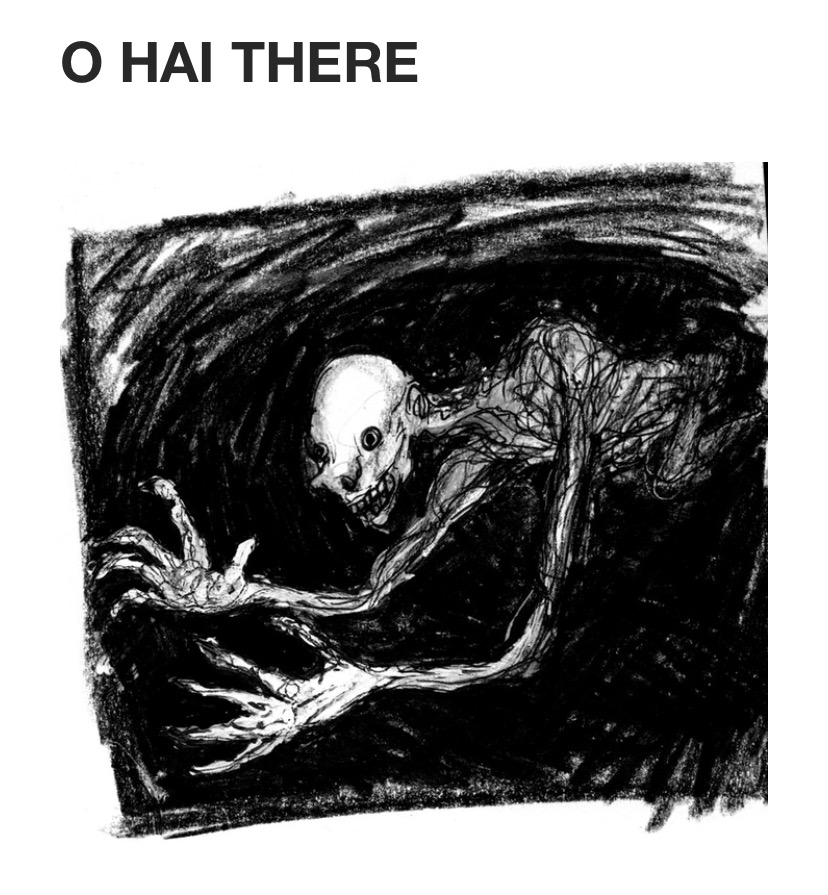
A few years later she would draw another favourite picture of mine, a picture of madness from Veins of the Earth. (Such an incredible book.) The picture feels like an evolution of the giant. I asked Scrap if that was her intention and she said, “Nope. (Other than its horrible and in a cave?)”
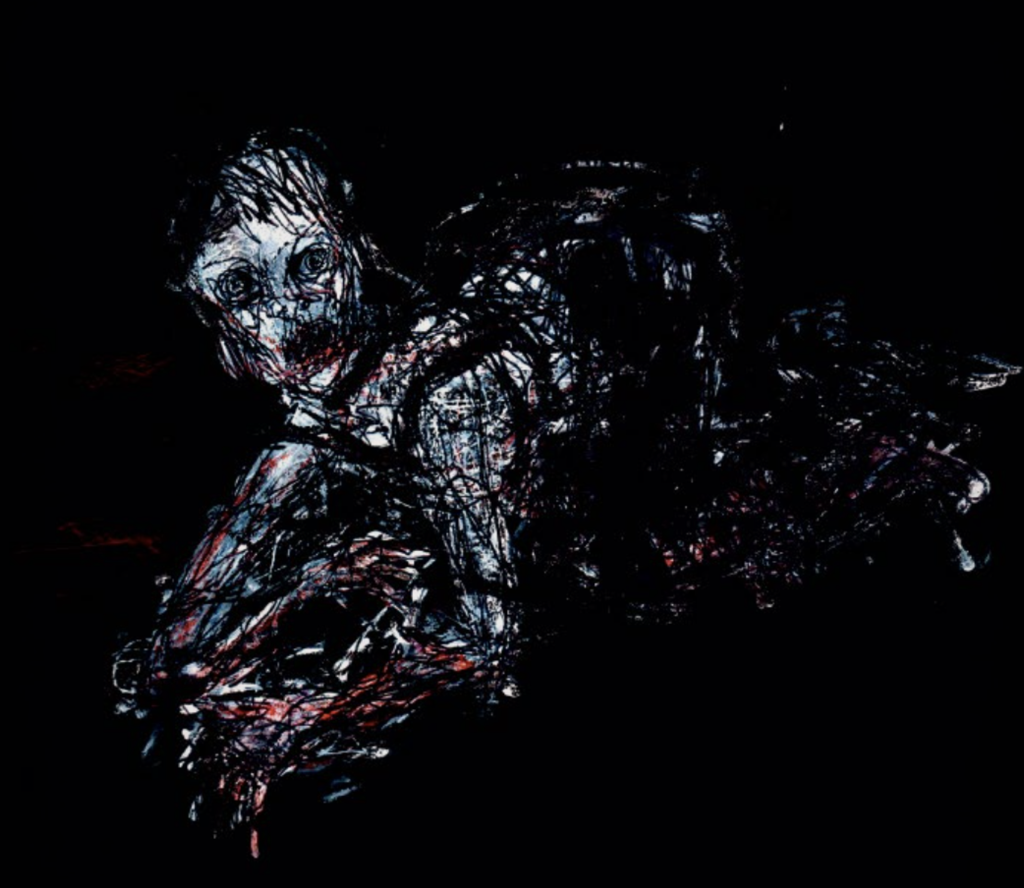
People will often denigrate Scrap’s art as scribbles. Which, on the one hand, sure, but there is clearly more going on. I don’t scribble this good. These eyes are piercing. The line work of her drawings feels frantic. It has an energy that feels charged. On Twitter, Warren D summed things up nicely: “I always emotionally respond to Scrap’s art before I finish consciously visually processing it; ‘feel’ it before I ‘see’ it. Most WotC art I see quickly and feel nothing.”

Fire on the Velvet Horizon is likely peak scribbling Scrap, but maybe also highlights what you can capture in such minimalist drawings. The history of that project is interesting. While Vein of the Earth was stuck in the miasma of layout and production, Scrap and Patrick worked on this monster book. Scrap mailed Patrick drawings and sketches, and he would turn them into monsters.
The thing about Velvet Horizon that gets overlooked, constantly, is that I chose a wide range of drawings to send to Patrick, and that variety included extremely loose sketches, more developed drawings, stuff I thought was bad, stuff I thought was good. Then whatever he responded to , he responded to, and that drawing would then go into the book. However there’s like a few entries where what he responded to was such a bizarrely small and brief drawing that I chose to draw a new drawing to go on that page, but I believe in every case the responded-to drawing is also on there too. There’s a few where the drawing responded to was something in the margins or on the back of another drawing, and I hadn’t even expected those scribbles to be up for consideration. That was all part of the experiment of that book.

I asked Scrap if she was like Picasso and could draw perfectly but decided that was boring. She laughed in my face. (Well, virtually.) She then went on to say:
Trying to get the hang of basics does inform my scribble style. It’s been an ongoing process of trying to draw conventionally or at least do the basics, turning out bad ugly drawings, but in the process of improving that skill, my gestural style improves as well.
Why does she draw the way she does? We can just ask her:
What has made my drawing looking like how it does is that I really struggle with the basics, especially anything informed by methodicalness and close observation. At some point in high school me and a friend were drawing our own illustrations on a print out of fairly broken fighting game rpg someone had downloaded from the early internet. I was trying to draw conventionally and it was turning out bad, and he was just going for it doing these crazy scribbles and they turned out amazing. Even when they didn’t look like what they were meant to , they still were hilarious. It was at that point that I realized if I just cut loose and scribbled and then tried to turn it into something , it would have much better results.
Veins on the Earth and her later books feature a bigger variety of types of art, but everything she does is always more abstract and impressionistic than your typical RPG drawing. The Blink Dogs and the Anitpheonix from that book are a couple of my favourite examples of her not-scribbling style.

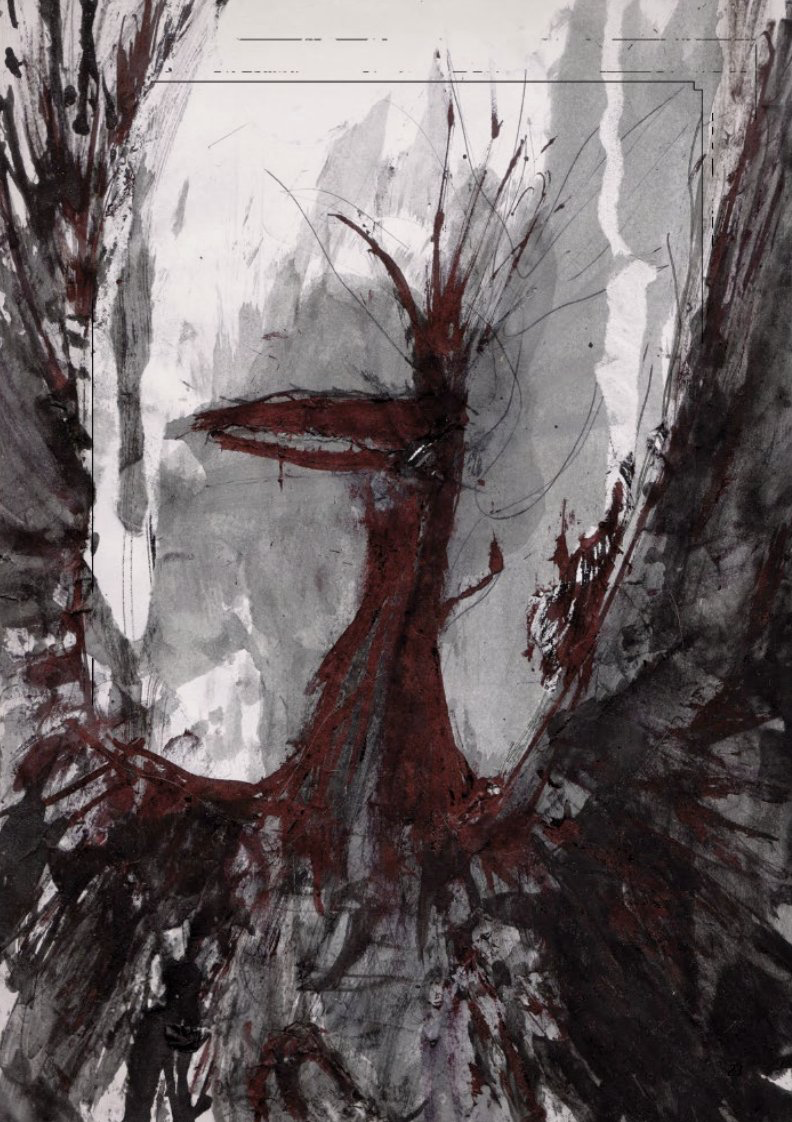
Scrap isn’t active on social media, but that doesn’t mean we should Forget about D.R.E. This post mostly exists to share some of her art, and maybe introduce her to people who weren’t around on G+ when she was more active in “the scene”. To get back to where we started, enjoy this picture from their latest Kickstarter.
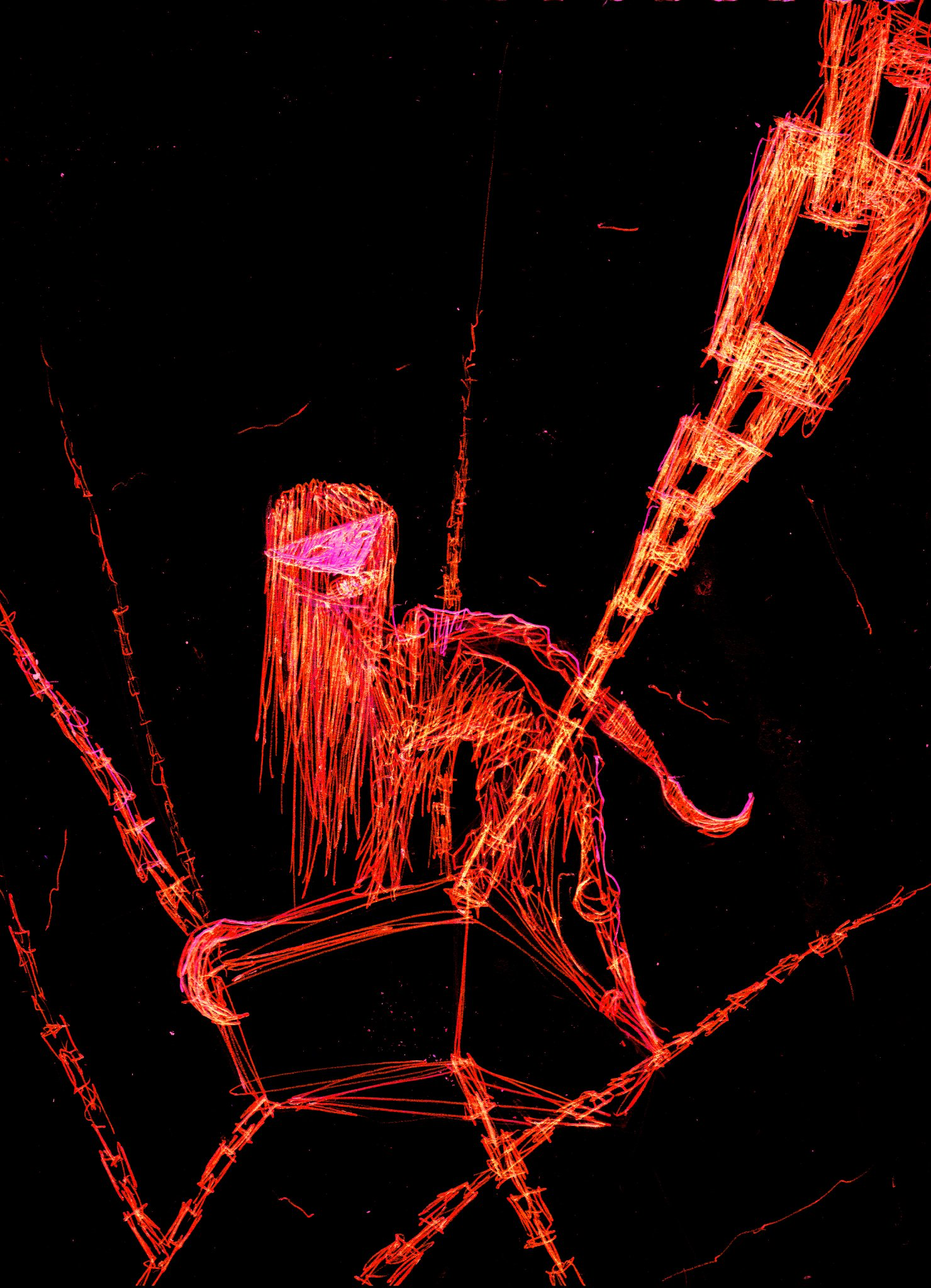
by Ramanan Sivaranjan on September 05, 2021
Tagged:
dco
patrickstuart
scrapprincess
osr
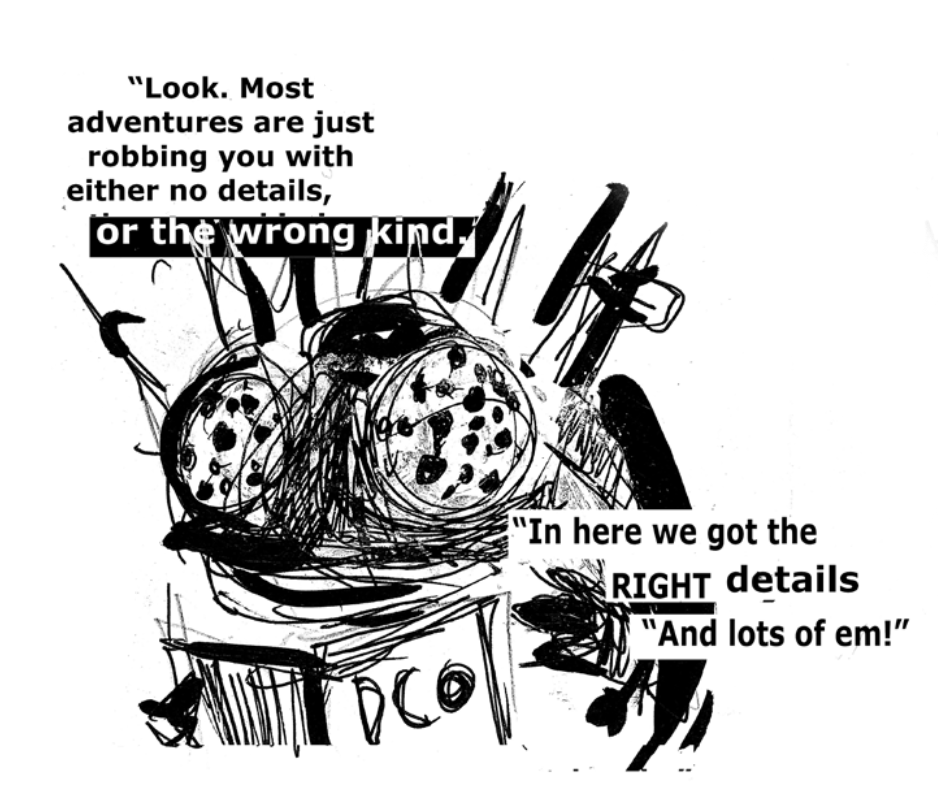
Patrick and Scrap are currently running a Kickstarter for the follow-up adventure to Deep Carbon Observatory, Demon-Bone Sarcophagus, so now seems as good a time as any to talk about their work. This is easy to do, as I’m planning on running Deep Carbon Observatory (Remastered) tomorrow, it made its way from the UK to me via my brother after a good long while. When I first reviewed DCO it was simply from having read it. I have more thoughts now as I prepare to run the module and talk to other people about their experiences doing so.
Deep Carbon Observatory came out in 2014. It featured a layout that be called serviceable at best. My friend Alex ran the module a couple years later, using that original version of the game. He wrote about the inaugural session on his blog. Our conversation about how to run the game transitioned into one about the game more broadly.
From a “usability” standpoint [the original DCO] is middling to poor. The maps are hard to read, the info design is unambitious. But Patrick knows that good storytelling is a way of organizing information by sheer virtue of being interesting enough to remember. Honestly I think it’s a shot across the bow of most conventional wisdom on module writing. — Alex Chalk
I have written about how Patrick reveals information to the reader seemingly at the same pace it would end up being revealed to the player, something I think makes his books as engaging to read as to play. It’s a very unusual approach to module writing, one I don’t think anyone else follows. The remastered edition of DCO does more work to help orient the reader, but for the most part you are thrown right into the deep end.
Patrick instructs you to read the whole god damn book before you run the adventure. Maybe this is actually a really obvious thing to do with a book, but I think a lot of thinking around information design in modules is rooted in the ideas coming out of the one-page dungeon contest: you should be able to look at a particular spread and have all the information you need to get the job done. The remastered edition brings this sort of thinking to DCO, but like Silent Titans, there are key facets of the module that won’t reveal themselves to you till you get to the end of the book. In DCO Patrick coyly describes the backstory for the module with the sub-heading, “in case of Speak with Dead, use this.” This timeline is exactly the sort of thing that you’d find in the introduction to a typical OSR module.
Patrick wants you to approach understanding a module the way he does: by reading the whole thing. You’ll need to read it all at some point anyway: why not at the start? And so I did, and then felt some panic about how I would even run all of this. There is so much going on in DCO: there are the Crows, the Witch, a cannibal cult, so many NPCs, the dam and its golem guardians, the actual Deep Carbon Observatory, etc, etc. Jesse Abelman told me to chill out: he ran the module straight from the book!
The layout of the [new] book was great, I could easily find anything I needed so I barely did any prep between sessions. That said, I’m not surprised it was easier to run from the first edition than expected. I had the same experience with Silent Titans. I think Patrick is so good at creating juicy gameable situations and encounters that everything else almost doesn’t matter. Whatever difficulty there may be in stitching those things together because of how the book is designed is balanced by the actual content. — Jesse Abelman
Jesse’s experience mirrors my own using Silent Titans. DCO feels like there is a bit more going on across the whole module, so I’m curious to see how it plays tonight. With Silent Titans I would lean on Patrick’s writing a lot to describe the scenes, sometimes reading his prose straight to the player. (Some real OSR blasphemy, I know.) Alex mentioned doing the same to me when he was running DCO: “Another thing I’ll say about DCO is I often struggle to improvise description, but I felt I was able to tune into its voice and channel that in describing situations.”
Patrick and Scrap’s books are sometimes maligned for being more art project than gaming artifact. I asked Patrick about this and he felt while Scrap and him can sometimes be quite out there and imaginative, they are both keenly aware that what they are making is for a game. If one of them forgets, the other will remind them. Reading their works you can see they are fixated on the game, in a way I sometimes feel other OSR writers forget: things are gonzo, but in the service of nothing.
Judging by my own bookshelf, a lot of adventures are written, read, and never played. As someone writing modules, it’s likely important to appreciate this fact, and try and make something that manages to be compelling even if it only ever sits on a shelf. But there is more going on here: solid adventures inject their ideas into your head as if they were your own. DCO is easier to run because its elements are so compelling. The writing is not simply fanciful or an attempt at post-modern storytelling: it’s all in service of the game.









